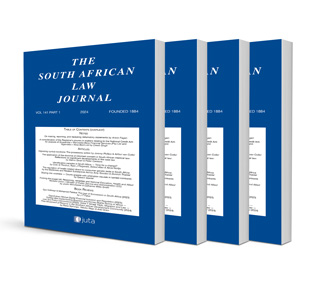The right of ‘interested parties’ to be heard during an anti-dumping investigation conducted by the National Treasury on behalf of the Minister of Finance

The right of ‘interested parties’ to be heard during an anti-dumping investigation conducted by the National Treasury on behalf of the Minister of Finance
Author Clive Vinti
ISSN: 1996-2177
Affiliations: Lecturer, Faculty of Law, University of the Free State
Source: South African Law Journal, Volume 137 Issue 4, p. 713-732
Abstract
The purpose of this article is to advocate for the right of ‘interested parties’ to be heard during the National Treasury anti-dumping investigation conducted on behalf of the Minister of Finance when the Minister of Trade, Industry and Competition makes a ‘request’ to impose or vary an anti-dumping duty in terms of ss 55 and 56 of the Customs and Excise Act 91 of 1964. This inquiry was prompted by recent jurisprudence from the High Court of South Africa which asserted that the Minister of Finance has a discretion when the Minister of Trade, Industry and Competition requests that an anti-dumping duty must be imposed or varied on a particular product. In this regard, the National Treasury of South Africa investigates the desirability of the imposition or variation of an anti-dumping duty on behalf of the Minister of Finance. However, interested parties are never heard by the Minister of Finance or the National Treasury. This poses the question whether interested parties must be heard during the National Treasury’s investigation on whether anti-dumping duties must be imposed or varied.